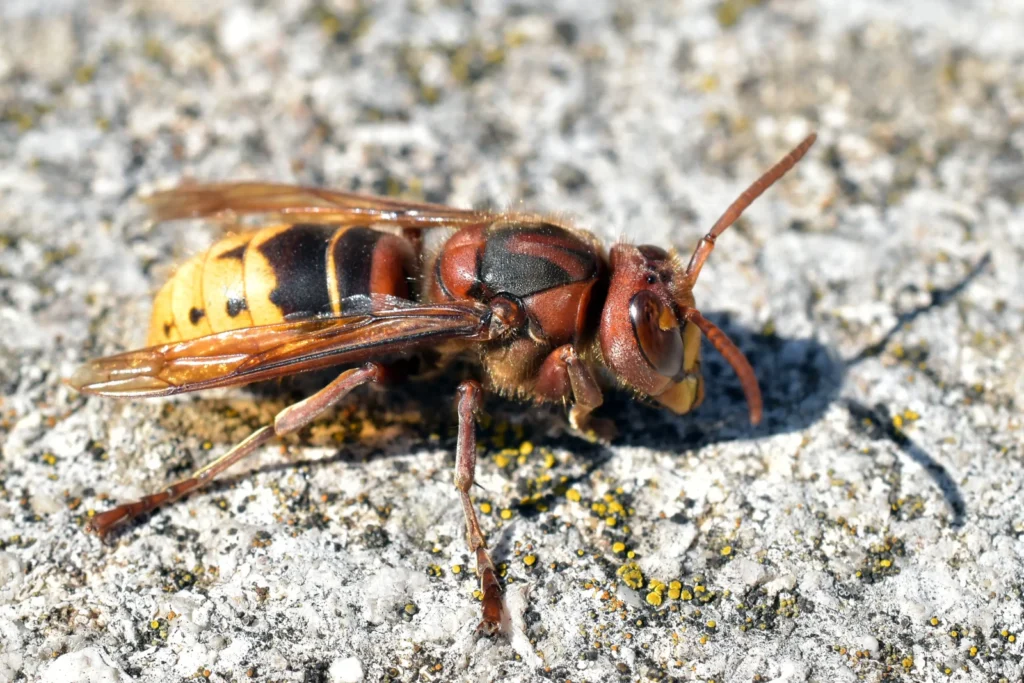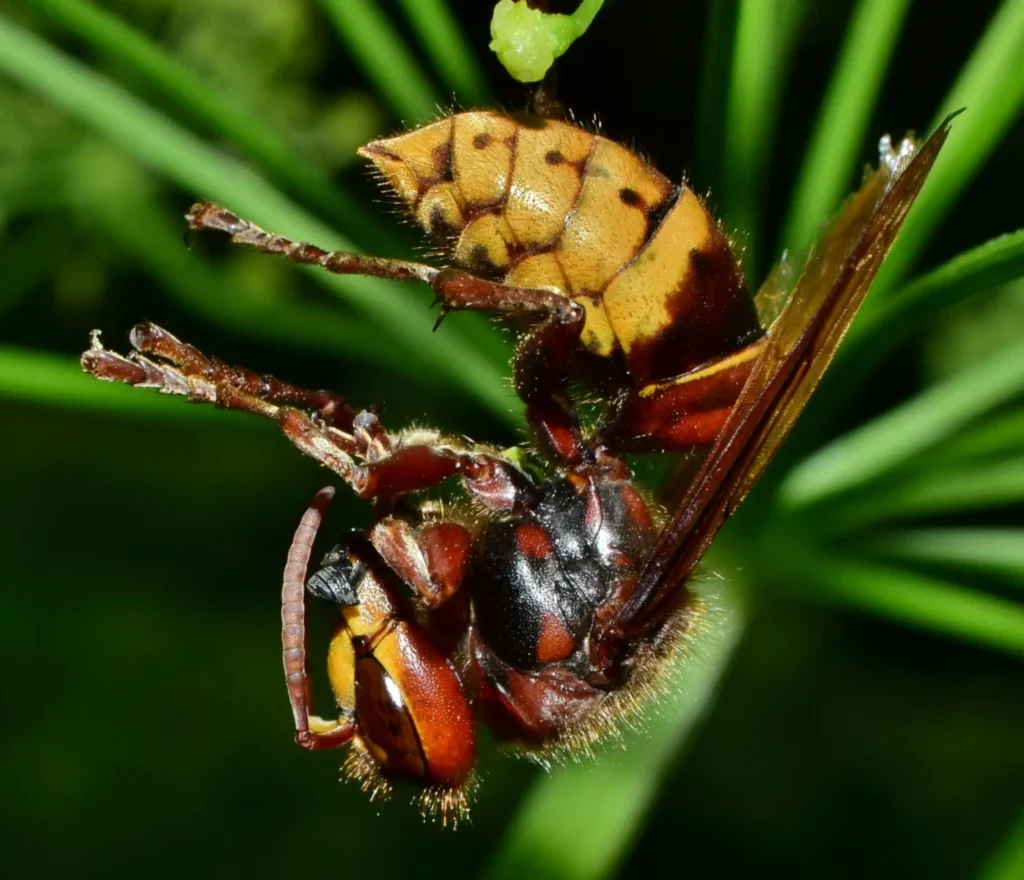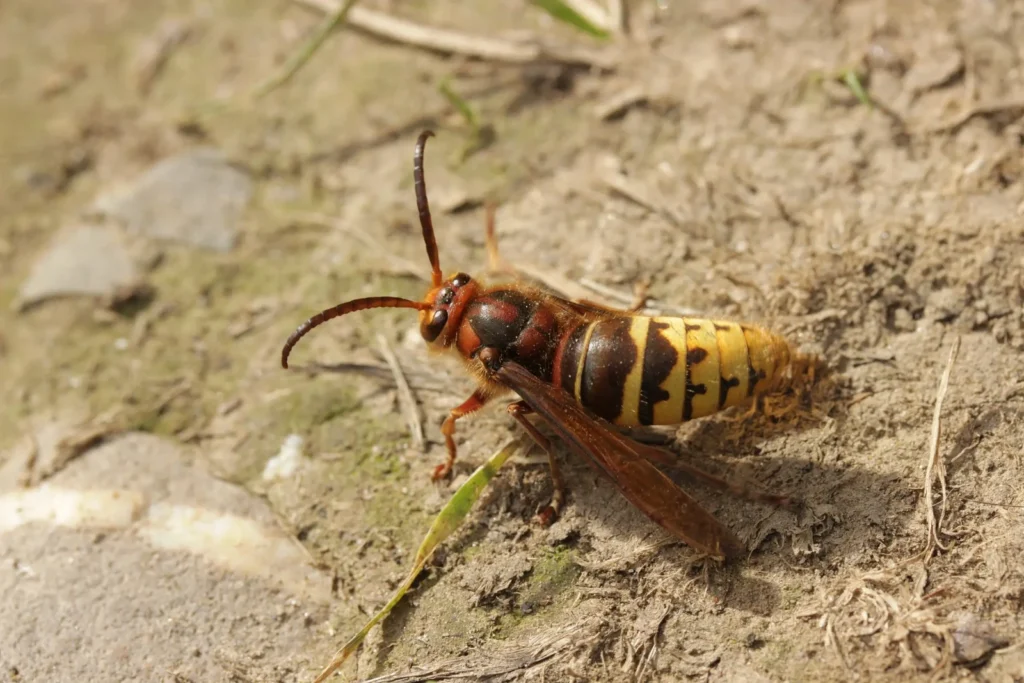European hornet (Vespa crabro) – the largest representative of the wasp family (Vespidae) in Europe. This a large, powerful and quite aggressive insectivorous predator, which plays an important role in the natural ecosystem.
Hornets often cause fear because of their painful bites, but in reality they less aggressivethan ordinary wasps, and attack only when threatened. They help control populations of other insects, which makes them important for agriculture.
In this article, we will look at anatomy, lifestyle, behavior, ecological significance and threats to this unique insect species.

Scientific classification
🔬 Classification of the European hornet:
✔ The Kingdom: Animals (Animalia)
✔ Type: Arthropods (Arthropoda)
✔ Class: Insects (Insecta)
✔ Row: Hymenoptera (Hymenoptera)
✔ Family: True wasps (Vespidae)
✔ Gender: Hornets (Vespa)
✔ View: European hornet (Vespa crabro)
📌 Interesting!
Hornets are the largest representatives of wasps, and their name Vespa comes from the Latin word meaning "wasp."
Description and features
💠 What does a European hornet look like?
• Size:
✅ Females (uteri) – 25–35 mm
✅ Working individuals – 18–25 mm
✅ Males – 21–28 mm
• Color scheme:
✅ Yellow-brown abdomen with black stripes
✅ Red head and chest
✅ Dark Wings length up to 40 mm
• Sting:
✅ Length 6 mm
✅ Does not remain in the victim's body after the bite
✅ Highlights painful toxinwhich may cause allergic reactions
📌 How is it different from other wasps?
✅ Larger size
✅ Quieter flight – unlike ordinary wasps, which buzz loudly
✅ Less aggressiveif not disturbed
Range and habitat
🌍 Where does the European hornet live?
This species is found in Europe, Asia and North America.
✅ Europe – from Britain to Russia
✅ Asia – Western and Central part
✅ North America – an introduced species, found in the USA and Canada
🔹 What places of residence does he choose?
✅ Forests and parks
✅ Gardens, meadows and farmland
✅ Tree cavities, attics and old buildings
📌 Interesting!
European hornets do not build their nests in the ground, like some species of wasps. They choose tree hollows, old stumps or secluded places under the roofs of buildings.

Lifestyle and behavior
🏠 Nest and colony
Hornets live in colonies, which consist of:
✅ Uteri – the only fertile female that lays eggs
✅ Working individuals – sterile females that feed the larvae and protect the nest
✅ Males – are born in late summer, their only function is to fertilize females
📌 Nest construction
* Use chewed wood, creating paper-like material
• Nests can reach 50 cm in height
• The colony has from 200 to 1000 individuals
🍽 Nutrition
🔹 Adult hornets:
✅ Nectar and sweet fruits
✅ Tree sap
✅ Honey and fermented fruits
🔹 Larvae:
✅ Protein food – flies, caterpillars, spiders
✅ Worker hornets hunt insects and bring them to the larvae
📌 Interesting!
Hornets play an important role in population control harmful insects, so they are useful for agriculture.
⚔ Aggression and defense
European hornets they don't attack without reason, unlike some smaller wasps.
❌ Cases when hornets attack:
• If you approached their nest
• If tried to kill them
• If they feel threatened
📌 Interesting!
Hornet may sting several times in a row, unlike honey bees.
Reproduction and development
🔹 Spring:
✅ The uterus wakes up after hibernation
✅ Builds the first little nest
✅ Lays eggs
🔹 Summer:
✅ Growing up first workers
✅ Colony rapidly expanding
🔹 Autumn:
✅ Appearing new queens and males
✅ They are mating
✅ Old colony dies
🔹 Winter:
✅ New uterus hibernate in tree bark or in the ground
✅ In the spring the process begins again
📌 Interesting!
Just new females hibernate, the old colony dies by the end of autumn.

Threats and significance for nature
⚠ What threatens the European hornet?
• Deforestation
• Chemicals and pesticides
• Mass destruction by humans
🛡 Security status:
✅ In some countries protected by law
✅ Important for ecosystems and insect pest control
📌 Interesting!
Unlike the aggressive Asian hornet (Mandarin Vespa), European hornet more calm and rarely attacks people.
Conclusion
European hornet – one of the most interesting insects in Europe.
💡 Basic facts:
✔ Beneficial predatorthat controls the insect population
✔ Less aggressive than regular wasps
✔ Lives in colonies that exist for only one season
✔ It should not be destroyed unnecessarily.
📢 Hornets are an important element of nature, not enemies of man!